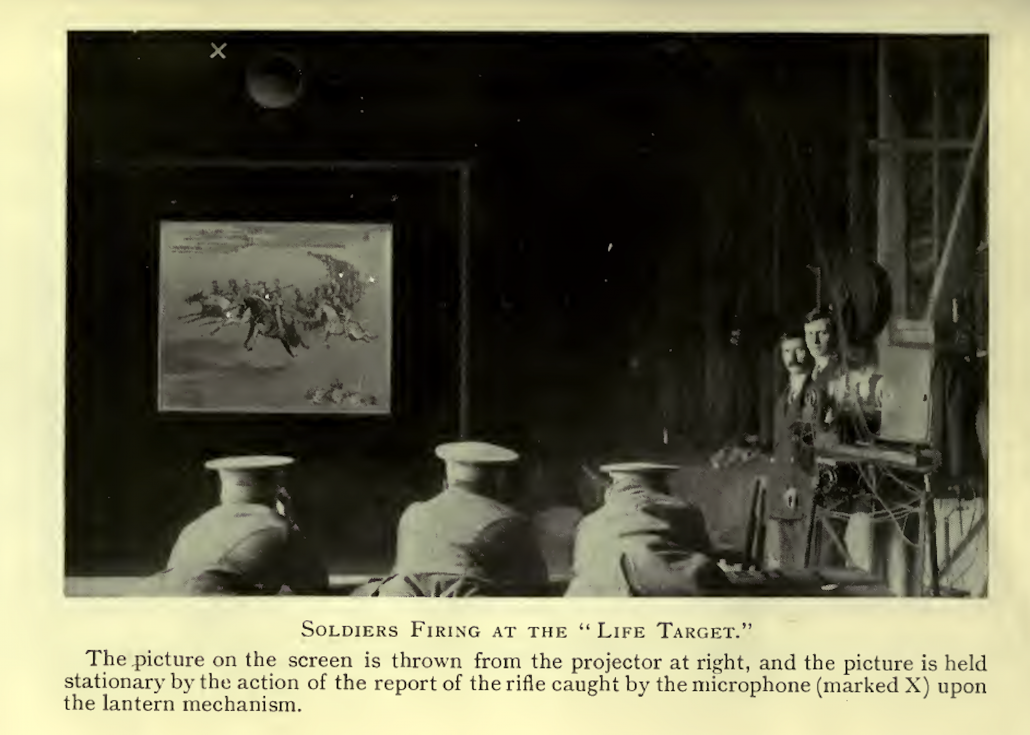Comparing Interactive Video to Video Personalization
Reading: 8 minsVideo personalization and interactive video might seem to have much in common and there's certainly some similarities between the two but there are also several key fundamental differences.
In this blog we'll be looking at these two fields of video technology and see what sets them apart from each other.
Contents:
What is Interactive Video?
History of Interactive Movies
The Psychology of Interactivity
Recent Developments in Interactive Video
Personalized Video
Comparison of Personalized Video and Interactive Video
Conclusion
What is Interactive Video?
Interactive movies, interactive film and interactive video are all terms for content based on visual storytelling that is driven by user interaction through clicks, touches and movement.
The meaning of the terms has shifted over the decades (from cinema through to video games and now on to commercials) as technology and trends have evolved and their uses have adapted. We’ll use all three terms here to try and show the historical context (...hopefully without making it too complicated).
History of Interactive Movies
Probably the first example of what could be called an interactive movie dates back to the first decade of the 20th century in the UK. It was like a carnival shooting gallery game set inside a cinema where the audience shot at moving targets on the screen and a hit would cause the image to momentarily stop and score a point. But as cinema became more sophisticated, this soon died out. The same technology was also used by the military during WW1 who immediately saw its benefits for training.
Military training via Life Targets device, illustration from Frederick Talbot, Practical Cinematography (1913).
The next key development was the Czechoslovakian film Kinoautomat which was premiered at Expo '67 in Montreal and directed by Raduz Cincera. This was the first truly interactive movie and was screened as a live interactive event in a cinema. A moderator would appear onstage at key moments on the stage and ask the audience to vote with a red or green button on their seat to decide what should happen next. The projector would then switch to the storyline with most popular response and so a different variation of the film might be shown at each screening. The idea never really caught on but this stunning piece of innovation using pre-digital technology was years ahead of its time.
© Radúz Cincera. Source - https://alchetron.com/Kinoautomat
The next major leap in interactivity came with the development of computer games and laserdiscs in the 1970s and 80s.
Computer games, first through arcade games and then home computers, radically changed the way that stories were told, and the way that people interacted with them. Suddenly a new world of possibilities opened up. The 1983 game Dragon's Lair was a real game-changer. Using Disney-quality animated full-motion video, the player was able to control the main character and decide which action or move they would make. Although limited compared to games today, this ability was radical at the time and the game was hugely popular. Several other games appeared over the next few years, each one pushing the young medium in new and exciting directions.
This technology in arcade games was possible because of laserdiscs. Before then, media such as celluloid or tape was always linear. The story could be paused or fast-forwarded but it couldn't jump instantly to another scene. Laserdiscs ability to do this meant that choices of multiple storylines were available to the player instantaneously.
With game developers starting to use the full capabilities of digital technology over the last few decades, and the explosion in the popularity of computer games, the relevance of interactive films as such has declined. Movies and video events are released sporadically but they feel like novelties rather than serious advances in the medium.
Photo by Kevin Bidwell from Pexels
The Psychology of Interactivity
So why is it that interactive video has never fully taken off as a dominant medium? Perhaps the answer lies in the way we use and consume media and the differences between viewing and playing.
Video and gaming are now probably the two dominant media in popular culture but they appeal for different reasons and give a different kind of satisfaction. Watching movies and videos is a passive activity. We like to sit back in a cinema or on a sofa and watch but the interactivity is on a mental level rather than a physical one. Gaming on the other hand encourages and rewards physical interaction. The more and faster, the better.
Interactive film is kind of in-between the two. We primarily want to watch but it still requires some physical effort so it's not passive. But it doesn't give us the adrenaline-soaked thrills that gaming does. By trying to appeal to both emotional camps, perhaps it appeals to none. A medium will tend towards the form of storytelling best suited to it, and long-form film and video is fundamentally an audience driven medium while interactivity is a solo experience.
Recent Developments in Interactive Video
However, Interactive Video (IV) has had a resurgence in digital commercials in the last 10 years, mirroring the massive growth in digital ads viewed on hand-held computer screens. Hand-held devices are naturally more favourable to interactivity - so it’s a better fit. Youtube paved the way for this with its onscreen Youtube Annotations (although they were discontinued in 2019) and its success saw marketers and brands begin to cautiously embrace the new opportunities.
Some of the first commercials from this new generation began appearing around 10 years ago. Early ones were fairly basic but they rapidly became more innovative and sophisticated as creators began to explore the medium and incorporate new technologies.
These new technological innovations include:
Branches: choosing different paths within the storyline allows a user to customise the content they see and create new and varied experiences. Think Bandersnatch.
Hotspots: clickable areas within the video that can reveal more information within the video or take a viewer to a different web page.
Data inputs: form fields on the screen into which a user can enter personal information like their name, age, etc. This encourages the viewer to engage with the brand while also giving valuable data to marketers.
360 views: the user can drag the screen to see in all directions within the frame.
Personalized video
Personalized videos are video content that has been adapted to each viewer by featuring personalized elements based on pre-collected data.
In simple terms, a single video is filmed then a template is created for the video into which data can be inputted to produce unlimited amounts of unique customized videos.
Versions of personalized videos have evolved over the years but recent technological advances and especially the introduction of cloud computing have meant that truly personalized videos on a large scale have not been possible until quite recently.
Nike was one of the first major companies to use it to create a campaign in 2015.
Motionlab has been at the forefront of video personalization since 2018 and has already won several awards. The company is constantly exploring new technological innovations to create a UX that is easy to use while giving maximum creative freedom to the user. The outstanding metrics that the campaigns receive suggest that it is a tool that will play an important role in customer messaging in the future.
Top e-commerce company Notino turned to Motionlab Platform to help create this successful and innovative video.
Comparison of Personalized video and Interactive Video
Video personalization and interactive video are similar in that they both use new technology to create content that is more engaging and innovative than traditional video.
Two key differences are:
I) Video personalization is more passive in that the user cannot change the content they have in front of them - but passivity is fine as people are, to put it bluntly, generally lazy. IV requires action from the user, to the extent that it becomes redundant if the user does not engage. This is an important disadvantage as many people ignore adverts completely and see them as an annoyance. Ultimately a higher percentage of the target audience is likely to engage with a personalized video and so the ROI will be better.
ii) Video personalization uses existing data to create content that is uniquely tailored to the viewer so that it is as relevant as possible. IV collects data from the user through their choices and actions so that it can be used in the future. The UX is therefore not as personal and unique. Viewers don’t always want to make a choice themselves, especially if the data that has already been collected can create a message for you that is relevant and useful.
These two key differences mean that each format is more ideally suited to different kinds of messaging. Video personalization works best for areas like e-commerce and utilities where existing data can create a more relevant message that will directly appeal to the viewer. IV work best in areas like e-learning and awareness, entertainment, brand awareness, recruitment & training and social media marketing. These are areas where the viewer pro-actively wants to educated or entertained.
These areas of focus are likely to change and increase as the technology and creativity increases and there is already some overlap. For example, some personalized video content has begun to incorporate interactive buttons into the content.
Video personalization is best for direct personal messaging while IV is aimed to be distributed to a wider audience that may not always engage so the CTR may not be as impressive.
In fact, statistics show that although interactive video does increase engagement and conversions, the increase is not as impressive as that for Video personalization. Video personalization seems to be more effective as a marketing tool and ROI, although IV does have the edge for creative innovation in its campaigns.
Conclusion
Interactive movies have a long history and have appeared throughout the decades in different kinds of media. But they have never really become established into the mainstream and are usually perceived as a gimmick that will not last.
Both video personalization and interactive video in commercials are relatively new mediums that are creating buzz because of their ability to utilise both new technologies and changing viewer habits. Each works by grabbing the attention of the viewer but they use different motivations and psychology to be effective. Both are looking to create a better UX and this is likely to improve as they become more sophisticated and accepted but current metrics shows that video personalization is a more effective way of delivering a message to a customer.
Danny Holman, Motionlab




